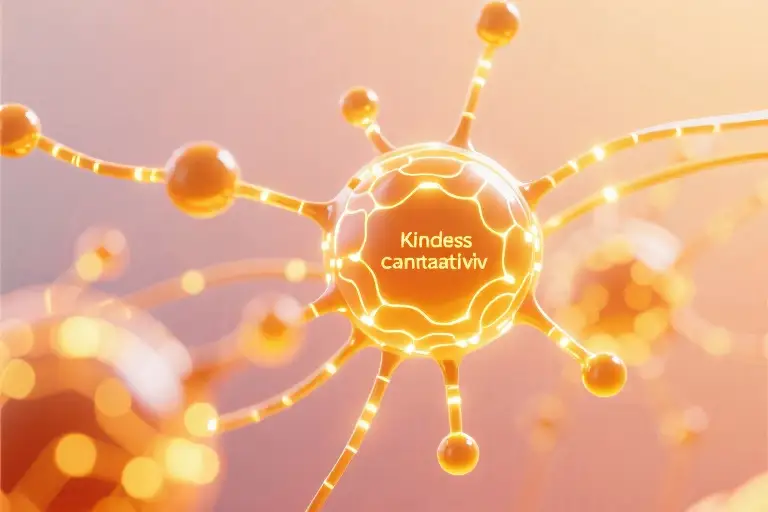The fluorescent lights hummed softly above as I sat in that Morphology and Semantics classroom at Leiden University, caught between two worlds. On my notebook, linguistics diagrams competed for space with scribbled poetry – the left brain wrestling with the right as our professor explained how humans extract meaning from arbitrary sounds.
Between phonetic transcriptions, these lines emerged:
Semantics is the study of meaning
it’s the way linguists excavate feeling from
arbitrary and meaningless phonemes
That moment crystallized the central paradox of semantics – we dedicate scientific frameworks to analyze something as fluid as meaning itself. How do clusters of consonants and vowels transform into shared understanding? Why does the word “love” conjure different hues of emotion when spoken by a Parisian lover, a Berliner baker, or a Tokyo florist?
The poem became my compass through semantic theory’s labyrinth. While textbooks catalogued referents and signifiers, poetry captured what academic prose couldn’t – how meaning simultaneously connects and isolates us. That notebook page held both the clinical analysis of metalinguistic awareness and the raw confession that “meaning metamorphoses each day and slips through our fingers like water in a lake.”
Perhaps you’ve felt this tension too. That flicker of frustration when autocorrect substitutes the perfect word with something almost right. The loneliness in a crowded group chat where messages abound but understanding feels scarce. We swim in language’s currents yet gasp for true connection.
What follows isn’t just linguistic analysis, but an invitation to witness meaning-making in action – through the interplay of academic semantics and poetic intuition. The answer to how we understand each other might lie where phonemes and feelings collide.
When Linguists Read Poetry: The Microscope of Meaning
Two years ago in a Dutch university classroom, I found myself scribbling poetry between morphology diagrams. The cognitive dissonance was delicious—here I was deconstructing language scientifically while simultaneously using it to create art. That poem became my Rosetta Stone for understanding semantics, the branch of linguistics that studies how meaning emerges from meaningless sounds.
From Phonemes to Feelings: The Alchemy of Language
The poem begins with what seems like magic: “linguists excavate feeling from/arbitrary and meaningless phonemes.” This perfectly captures the first miracle of semantics—how we transform basic sound units (phonemes) into emotional payloads. Consider the word “love.” The phonemes /l/ /ʌ/ /v/ are acoustically no more significant than random noise until we collectively agree they represent that warm, complex emotion.
Key Concepts Illustrated:
- Signifier & Signified (Saussure): The word “table” (signifier) connects to our mental concept of a table (signified), yet as the poem notes “a table is a table (until it’s not)”—like when it becomes a spreadsheet in Excel.
- Metalinguistic Awareness: That moment when you realize the word “word” is itself a word—the poem plays with this in “me changes/meaning when/said by you,” showing how context alters interpretation.
Case Study: The Poetry of Classical Chinese
Chinese shi poetry demonstrates this phoneme-to-meaning alchemy beautifully. The character 青 (qīng) can mean blue, green, or black depending on context—its meaning emerges from adjacent characters like 山 (mountain) or 天 (sky). This “imagistic stacking” technique creates layered meanings that Western languages often need multiple words to convey.
Why This Matters for Language Learners
Understanding this process helps when:
- Learning new languages: Recognizing that words are containers we fill with personal meaning
- Creative writing: Choosing words not just for dictionary definitions but for their emotional resonance
- Digital communication: Decoding tone in text messages where phonemes become emojis or punctuation
The poem’s central insight—that “we made our meaning and infused/our feeling”—reveals semantics as both science and art. Like chemists studying reactions between elements, we linguists examine how basic linguistic components combine to create meaning explosions in human minds.
Practical Exercise: Try this tonight—listen to a familiar song in a language you don’t speak. Notice how the phonemes still convey emotion despite lacking lexical meaning. That’s semantics in action.
The Fluidity of Meaning vs. The Rigidity of Labels
Poetry has always been a playground for linguistic contradictions, and this piece vividly illustrates how meaning constantly slips through our attempts to pin it down. The poem’s central tension lies in its paradoxical pairings – those moments when language reveals its inherent limitations by presenting us with impossible realities.
When Words Betray Their Own Definitions
Consider the striking line: “a lonely journey full of people.” At first glance, it appears nonsensical – how can something be simultaneously lonely and crowded? Yet this contradiction perfectly captures the modern experience of urban isolation. We’re physically surrounded yet emotionally disconnected, a phenomenon particularly amplified in our digital age where social media connections often substitute for meaningful relationships.
Other paradoxical pairings in the poem follow similar patterns:
- “busy roads of strangers alone” – the anonymity of crowds
- “chaos that keeps us calm” – the strange comfort of familiar turmoil
- “a home without roots” – the modern nomadic experience
- “a life full of everything that’s just not enough” – the paradox of abundance
These aren’t just poetic devices; they’re linguistic manifestations of cognitive dissonance. Our brains struggle to reconcile these opposing concepts, yet we instinctively understand their truth. This tension between what words literally mean and what they convey emotionally lies at the heart of semantic study.
The Inflation of Meaning in Digital Communication
In our swipe-right culture, words have become increasingly divorced from their original meanings. Consider how:
- “Friends” now refers to casual social media connections
- “Like” has transformed from preference to passive acknowledgment
- “Love” gets tossed around in comment sections with decreasing emotional weight
This semantic inflation mirrors economic inflation – as we use words more frequently and casually, their value diminishes. The poem anticipates this when it observes “meaning metamorphoses each day and slips through our fingers like water in a lake.”
When Language Fails Us
We’ve all experienced moments when words fall short:
- Trying to describe a complex emotion
- Explaining a deeply personal experience
- Translating culture-specific concepts
The poem highlights this through examples like “love” varying across languages and cultures. Even within the same language, personal associations color meanings differently – your “home” carries different connotations than mine.
Reflection Exercise:
Think of a word that holds special meaning for you. Now consider:
- How would you explain its personal significance to someone else?
- What experiences shaped this unique understanding?
- Can you think of a time when this word failed to convey what you meant?
These moments of linguistic breakdown reveal an important truth: meaning isn’t contained within words themselves, but in the spaces between speaker and listener, writer and reader. As the poem suggests, perhaps meaning is less about dictionary definitions and more about “the fabric of the soul we exchange for some of yours.”
When Theories Drown: The Unanswered Questions of Semantics
Two years ago in that Amsterdam classroom, scribbling poetry between semantic tree diagrams, I realized something unsettling: the very theories we use to study meaning often fail to capture how meaning actually works in our lives. This chapter isn’t about defeat—it’s about the fascinating frontiers where semantics meets its limitations, and where new possibilities emerge.
The Three Great Semantic Puzzles
1. AI’s Dictionary Dilemma
Modern language models like GPT-4 can generate human-like text, yet still stumble on what children grasp instinctively—that “I’m so hungry I could eat a horse” isn’t about animal consumption. The issue? AI lacks embodied semantics—the physical experiences that ground our understanding. fMRI studies show something remarkable: when humans hear the word “grasp,” our motor cortex activates as if physically gripping something. No current AI has ever held a coffee cup, and that changes everything.
2. The Child’s Secret Code
Toddlers acquire word meanings at staggering speed (about one new word every 90 minutes by age two), despite never being given dictionary definitions. How? Neuroscience reveals they’re not just learning words—they’re building semantic networks where “dog” connects to barks, fur, and that time Goldie licked their face. This explains why poetic phrases like “the dog of sadness” make intuitive sense despite being “wrong”—our brains treat meaning as a web, not a spreadsheet.
3. Lost in Translation
When the Japanese word “natsukashii” gets translated as “nostalgic,” we lose its unique blend of sweetness and sorrow. Translation apps still can’t handle what linguists call untranslatable semantics—words tied to cultural concepts with no direct equivalents. Interestingly, bilinguals’ brain scans show they access different semantic networks when switching languages—proof that meaning isn’t universal but ecosystem-specific.
Lifelines for Drowning Theories
Recent breakthroughs offer hope for these challenges:
- Neurosemantics: Brain imaging now lets us see meaning formation. When subjects hear “lavender,” their olfactory cortex lights up—evidence that meaning is multisensory. Researchers at MIT are using this to develop AI with “simulated senses.”
- Construction Grammar: This approach treats meaning as LEGO-like building blocks rather than fixed definitions. It explains why we understand novel phrases like “Zoom fatigue” instantly—we combine existing semantic pieces in new ways.
- Poetry as Data: Some linguists now analyze poetry (like my classroom scribbles) as “meaning stress tests”—places where language stretches until its semantic seams show. That “lonely journey full of people” line? It’s not nonsense—it’s how we articulate modern paradoxes algorithms can’t yet parse.
The Beautiful Struggle
Perhaps semantics isn’t failing—we’re just expecting it to work like chemistry when it behaves more like weather forecasting. As Dr. Elena Semino notes, “Meaning has patterns, but they’re more like cloud formations than molecular structures.”
Next time you struggle to explain a feeling or marvel at a child’s strange new word usage, remember: you’re witnessing the messy, magnificent process that keeps linguists both frustrated and fascinated. And who knows—maybe your personal experience with meaning holds clues even the best theories haven’t captured yet.
The Dark Matter of Meaning: Connection Beyond Words
We’ve followed meaning’s journey from phonemes to philosophy, witnessing how language both builds bridges and burns them. Now we arrive at semantics’ most tantalizing paradox: the moments when words fail us completely, yet understanding flourishes. Like astronomers studying dark matter by observing its gravitational effects, we detect meaning’s fullest presence precisely when language seems absent.
When Language Becomes a House
Martin Heidegger’s famous assertion that “language is the house of being” takes on startling clarity in our poem’s closing lines. The shift from academic terminology (“metalinguistic awareness”) to visceral metaphors (“fabric of the soul,” “river running deep”) mirrors Heidegger’s belief that true meaning resides beneath grammar and vocabulary. Consider how:
- Musical semantics: A composer friend once described Beethoven’s Moonlight Sonata as “the German language dissolved into pure emotion.” The piece communicates longing more directly than any dictionary definition of sehnsucht.
- Dance dialects: In flamenco, the duende—that moment when a dancer transcends technique—demonstrates meaning emerging from bodily syntax rather than verbal structure. As the poem suggests, we “exchange fabric of the soul” through movement before translation occurs.
The Untranslatable Communion
Our digital age makes this phenomenon more visible than ever. Notice how:
- Emoji sequences create micro-narratives that bypass linguistic frameworks (a 🔥💔🌊 chain conveys heartbreak differently across cultures)
- Gaming communities develop shared meaning through play mechanics rather than vocabulary (the “tea-bagging” gesture in first-person shooters)
- Pandemic isolation birthed new forms of wordless connection—from balcony concerts to protest murals
These examples reveal what the poem calls “the eighth wonder”: meaning that flows between us like underground rivers, surfacing in unexpected art forms and spontaneous human gestures.
Practical Epiphanies
How can we harness this insight?
- For language learners: Supplement vocabulary lists with music/film analysis—notice how Italian opera arias teach emotional context that phrasebooks miss
- For creatives: Try “translation chains” where a poem becomes a dance becomes a painting becomes a meal
- For everyone: Practice the Nordic concept of kalsarikännit—that untranslatable Finnish feeling of drinking alone in underwear—by seeking moments where experience defies description
As our poem’s current carries us forward, we’re left with its wisest provocation: perhaps meaning was never in the words at all, but in the silent spaces between them—the shared breath before speech, the held glance after music ends, the understanding that flows when we stop trying to define it.
The River Within: Where Meaning Flows Beyond Words
Let the final lines of our poem linger in the air like morning mist over water:
meaning is the river
running deep within us
These words carry the quiet truth we’ve been tracing through linguistics labs and poetic paradoxes—that meaning ultimately lives in the silent spaces between our definitions. Semanticists map riverbanks, poets sail the currents, but the water itself belongs to none of us.
The Untranslatable You
Think of a feeling you’ve never found adequate words for—perhaps:
- The particular loneliness of laughing in an empty room
- The way certain sunlight makes your childhood street appear in your throat
- That emotion which isn’t quite nostalgia when you overhear a stranger’s phone call
These are your meaning tributaries, the personal dialects of experience that flow into humanity’s shared river. No semantic theory can fully capture why your grandmother’s soup recipe tastes like forgiveness, or why a forgotten song can unearth buried cities in your chest.
Why #MeaningIsRiver Resonates
When we invite you to share stories with this tag, we’re acknowledging:
- Fluidity over fixation – Like water, meaning adapts to its container (your unique life)
- Depth beneath surface – The most profound meanings often resist verbalization
- Connection through current – Separate streams merging into something larger
Consider how:
- A single word (home, belonging, enough) carries different sediment for each speaker
- Emoji combinations create new meaning layers beyond dictionary definitions
- The phrase “I understand” often means “I’m willing to stand under your meaning with you”
Your Turn at River’s Edge
Here’s how to participate:
- Notice when language fails you (that’s meaning trying to overflow its banks)
- Create your own metaphors (what shape is your untranslatable feeling?)
- Share using #MeaningIsRiver—not definitions, but experiences:
- “#MeaningIsRiver is my Korean grandmother humming Christian hymns while washing rice—a sound that means ancestry can be both lost and found in the same breath”
- “#MeaningIsRiver is the 3am conversation where we kept saying ‘you know?’ and we actually did”
The Linguistic Wonder That Remains
As our semantic journey concludes, remember:
- Theories describe, but don’t contain meaning
- Dictionaries map shores, but the water keeps moving
- What we call “misunderstanding” might just be tributaries yet to meet
So we pass you the canoe paddle. Where will your meanings flow tomorrow? What undiscovered country waits where your personal current joins the greater human river? The beautiful truth is this: even as language fails us, we never stop speaking meaning to one another. Not perfectly, not permanently—but profoundly.
Afterword: For those who want to keep exploring, I recommend these next steps:
- Read: “The Spell of the Sensuous” by David Abram (how perception shapes meaning)
- Try: Keeping a “meaning journal”—record moments when feelings outran words
- Study: Embodied cognition research (how our bodies participate in meaning-making)*





